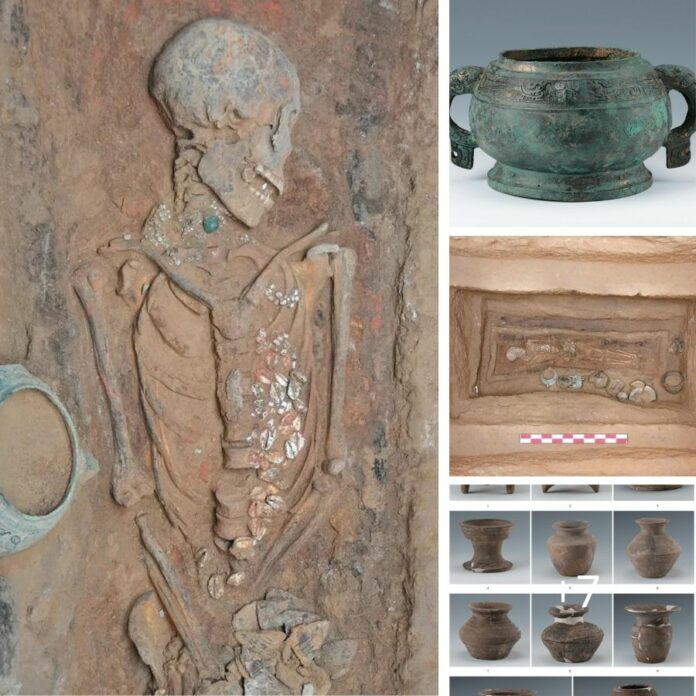Unveiling the Mysterious Ba State
In an extraordinary archaeological find, experts in North China’s Shanxi Province have uncovered the tomb of a noblewoman, dating back roughly 3,000 years. The tomb, labeled M1033, is situated within the Dahekou cemetery in Yicheng County, and represents a significant milestone in Chinese historical research.
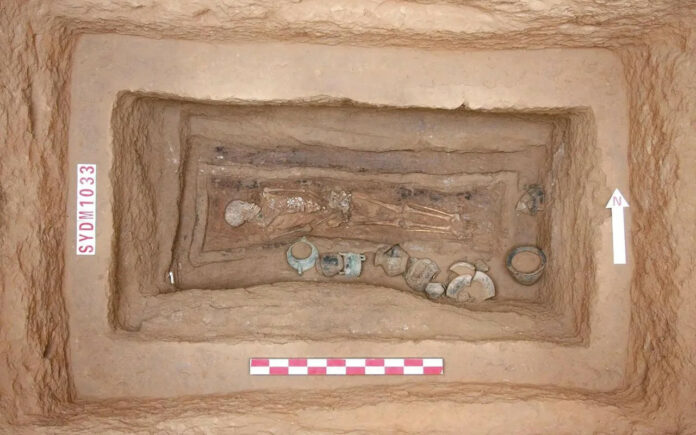
The Dahekou Cemetery, a site from the Western Zhou Dynasty, was first discovered in 2007 and contains over 600 burials along with 20 chariot-and-horse pits. This site has provided crucial insights into the Ba state, a previously unknown entity in the historical records of the Western Zhou period. Bronze inscriptions found here reveal the state clan’s name as Ba 霸, with Ba Bo identified as its leading ruler.
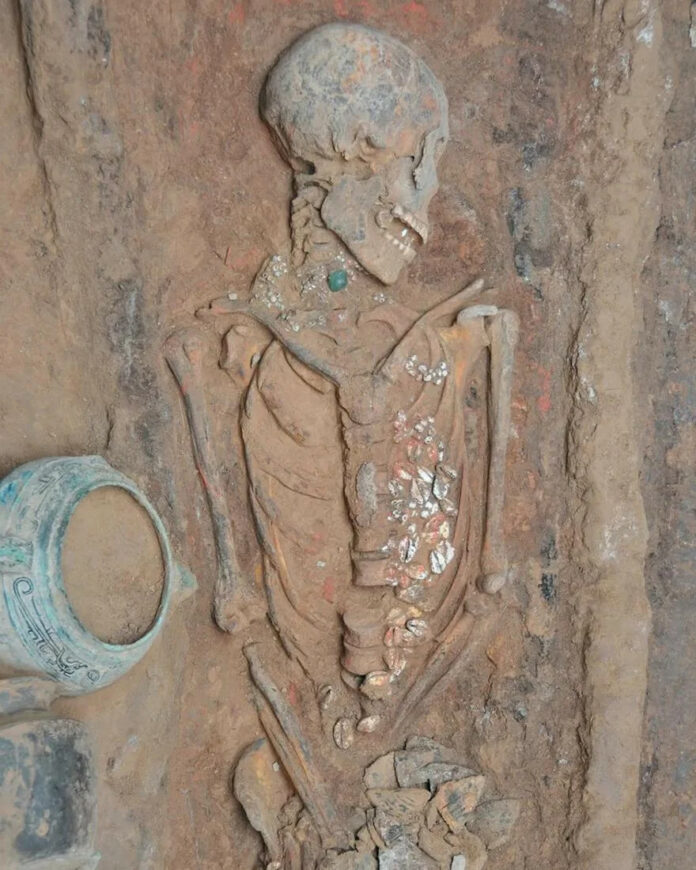
Insights into Ancient Burial Practices
Xie Yaoting, the head of the archaeological team, characterized the tomb as medium-sized, featuring a central pit that held the remains of a sacrificial animal. The tomb’s occupant, a woman aged between 31 and 34, was interred in a supine position with straight limbs, indicating her status as a middle-ranking noblewoman from the mid-Western Zhou period. The tomb was rich in artifacts, with 430 items divided into 93 categories, including bronze wares, pottery, jade ornaments, and shellfish containers. The presence of the sacrificial animal underscores the ritualistic nature of burial practices during this time.
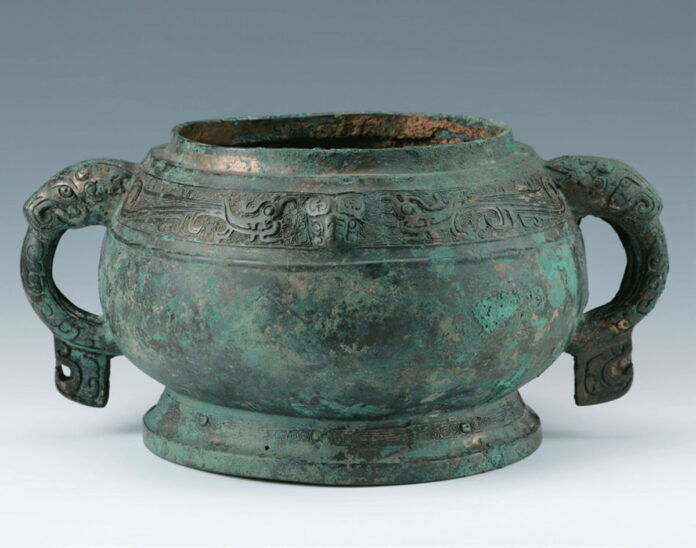
Implications for Understanding Ancient China
The discovery of the Dahekou cemetery has far-reaching implications for comprehending the social and political dynamics of ancient China. While the Jin state was dominant in much of Shanxi Province during this era, the Ba state’s presence points to a more intricate network of feudal states and their interactions.
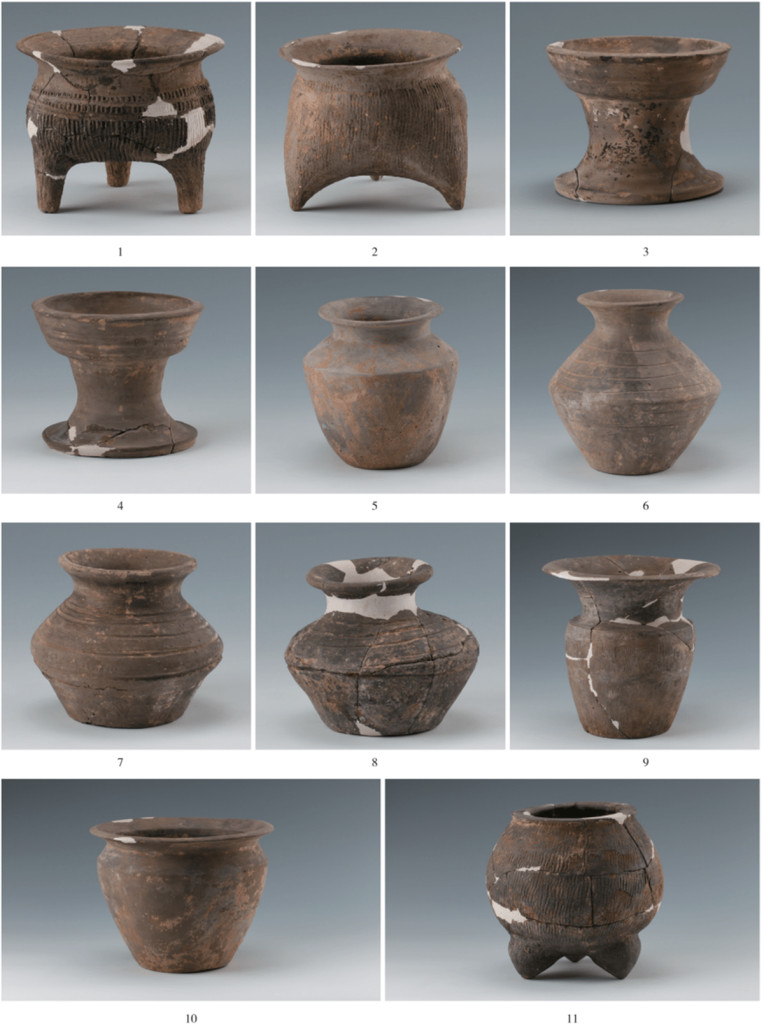
The Dahekou Cemetery Archaeological Team, consisting of the Shanxi Provincial Institute of Archaeology, the Cultural Relics Bureau of Linfen City, and the Cultural Relics and Tourism Bureau of Yicheng County, has played a crucial role in unveiling this remarkable site, offering new perspectives on the complex history of ancient China.



